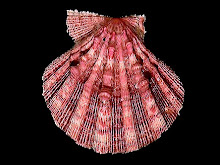
This female A sagrei has a tell "tail" sign of problems. Bioaccumulation is suspect. This presentation of posterior growth after a break is not considered within normal limits. The lawn where this specimen was obtained is still frequently sprayed with organophosphates, any of several organic compounds containing phosphorus and is used by the resident for pest control and management. If the proper equipment had been available, diagnostics would have been run on this specimen. Rising numbers in abnormal Anolis specimens are being noted, just as in presentations of other abnormal Animalia in Florida (aside from limits within normal ranges, such as high incubational temperatures in Amphibia or Testudinae ovum). Frogs
The Environmental Protection Agency (EPA) allows atrazine levels of 3 parts per billion (ppb) in potable water. Tyrone Hayes of the University of California, Berkeley found that when tadpoles were exposed to atrazine levels of only 0.1 ppb they developed extra testes, or even ovaries. Atrazine promotes the conversion of testosterone to estrogen, which explains why male frogs often developed both male and female sexual organs. Also, when adult frogs were exposed to these low levels they developed smaller larynxes and had only one-tenth the testosterone level of unexposed frogs. [Proc Natl Acad Sci USA 02;99(8):5476-80]
In another study on the effects of bioaccumulation, researchers found that reproduction was disrupted in female orniths that were exposed to estrogen at levels now commonly found in the wild. Finches exposed to estrogen produced fewer eggs and had more fragile shells. Numbers of hatchlings fell dramatically and the newborns had malformed oviducts. [Horm Behav 02;41(2):236-41]








3 Comments:
This comment has been removed by a blog administrator.
This comment has been removed by a blog administrator.
This comment has been removed by a blog administrator.
Post a Comment
<< Home